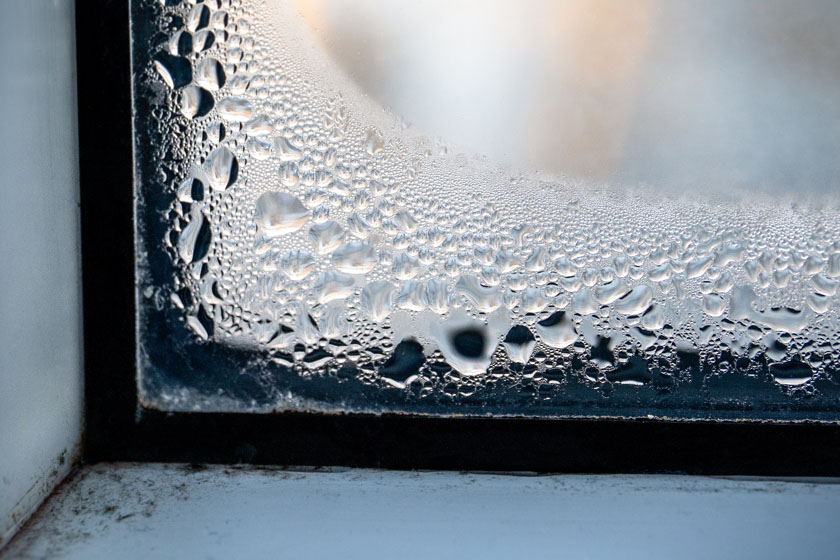This time of year, with our extensive list of holiday errands and get-togethers, just about the last thing that anyone thinks about is mold problems. However, it’s typical that when outdoor temperatures begin to drop, Gold Health and Safety Consulting gets an uptick in the number of calls for help with mold. Her’s some advice about mold.
Why is this? There are two main ways that mold problems happen:
- Moisture intrusion caused by some sort of flood or leak (toilet overflows, window or roof leaks, etc.).
- Excessive humidity – the source of more problems in cold weather, especially along the coast, where ambient humidity is higher.
Why is humidity a problem in cold weather?
People tend to close their windows more in cold weather. In addition, when it’s cold out, uninsulated walls, windows and window frames conduct cold from the outside, which provides a surface where humid air can condense. Both of these combine to create conditions where mold can grow.
Some interior humidity caused by human activities is perfectly normal, including human breath, cooking, bathing, and doing laundry. Showering puts a lot of humidity into the air, and the hotter and longer the shower, the greater humidity is created. Because of this, building codes require that bathrooms must either have a window or a fan to allow humidity to escape. However, fans get weaker with age, and often they don’t get used by the occupant. With bathroom windows, understandably, people often shut their bathroom window when it’s cold out. Who likes to freeze in the shower? The end result can be elevated humidity leading to mold problems.
Dampness – like inside a poorly ventilated bathroom or closet, or on walls and ceilings damp from condensation – allows mildew (i.e., surface mold) to form. The mildew grows only on the damp surfaces and/or on household items, such as shoes and other leather goods, ballistic nylon suitcases, backpacks, and the like that have been stored in damp areas. A musty smell often accompanies the mildew.
This usually is not a serious problem. Mildew can be wiped off surfaces with an ordinary household cleaner, such as with a Clorox® wet wipe, bagged, and thrown away in the outside trash. Clothing that smells or has minor mildew can be washed or dry-cleaned as one would normally do for that fabric. Anything that can’t be cleaned thoroughly should be disposed of. Note that when mildew appears on walls, there is no need to remove the wall (although unscrupulous mold remediators and ill-informed mold inspectors have told people that they need to!).
Occasionally a mildew problem is so severe that it degrades indoor air quality by spreading mold spores in the air. When this occurs, the interior of the building will need professional decontamination. The only way to find out is to collect air samples.
An investigation by Gold Health and Safety Consulting will tell you if have a minor mildew problem (i.e., surface mold), or something more serious, and if the problem has made a significant impact on indoor air quality.
Going forward, the cure is to prevent mildew from coming back is by controlling interior humidity levels. Ideally, humidity levels indoors should be below 60%. Inexpensive humidity meters can be purchased online to help measure and manage humidity. Opening windows and/or running the bathroom fan during and a good while after showering is essential to reducing interior humidity levels.
Other suggestions include re-painting affected areas with a mildew-resistant paint or getting a dehumidifier to keep humidity levels ideal. “Damp Rid” containers offer only a temporary solution and therefore are less reliable.
Gold Health and Safety Consulting provides recommendations, advice about mold to our Clients – as part of our investigations of each unique situation – that will help correct the situation and protect your property and the health of building occupants.






